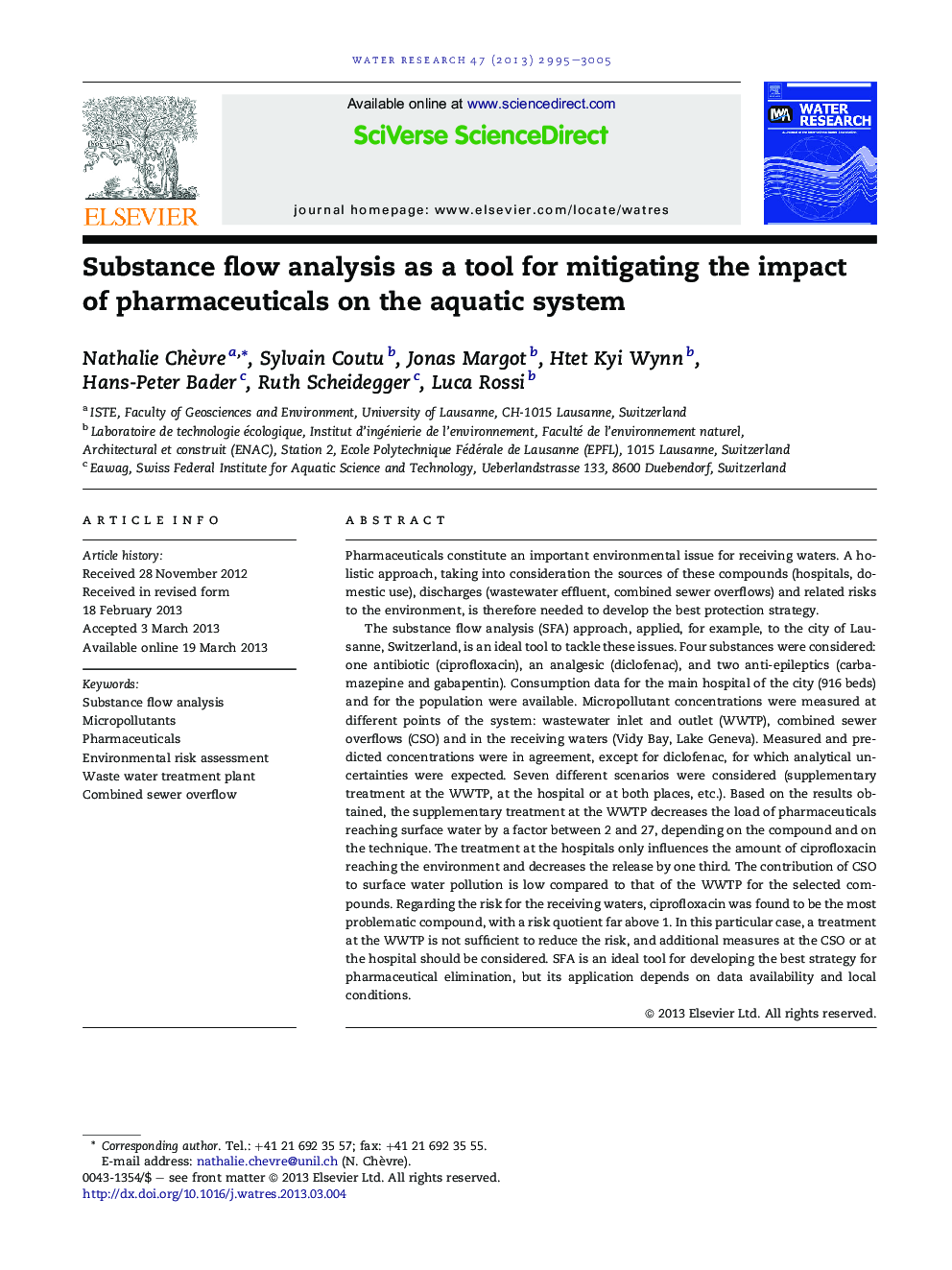| کد مقاله | کد نشریه | سال انتشار | مقاله انگلیسی | نسخه تمام متن |
|---|---|---|---|---|
| 4482115 | 1316848 | 2013 | 11 صفحه PDF | دانلود رایگان |

• WWTP discharge is the main source of pharmaceuticals in surface water.
• Aquatic risk can be reduced by implementing supplementary treatment at the WWTP.
• CSO may contribute significantly to the aquatic risk of pharmaceuticals.
• Hospitals do not contribute greatly to pharmaceutical pollution overall.
• SFA is an interesting management tool to reduce the aquatic risk of pharmaceuticals.
Pharmaceuticals constitute an important environmental issue for receiving waters. A holistic approach, taking into consideration the sources of these compounds (hospitals, domestic use), discharges (wastewater effluent, combined sewer overflows) and related risks to the environment, is therefore needed to develop the best protection strategy.The substance flow analysis (SFA) approach, applied, for example, to the city of Lausanne, Switzerland, is an ideal tool to tackle these issues. Four substances were considered: one antibiotic (ciprofloxacin), an analgesic (diclofenac), and two anti-epileptics (carbamazepine and gabapentin). Consumption data for the main hospital of the city (916 beds) and for the population were available. Micropollutant concentrations were measured at different points of the system: wastewater inlet and outlet (WWTP), combined sewer overflows (CSO) and in the receiving waters (Vidy Bay, Lake Geneva). Measured and predicted concentrations were in agreement, except for diclofenac, for which analytical uncertainties were expected. Seven different scenarios were considered (supplementary treatment at the WWTP, at the hospital or at both places, etc.). Based on the results obtained, the supplementary treatment at the WWTP decreases the load of pharmaceuticals reaching surface water by a factor between 2 and 27, depending on the compound and on the technique. The treatment at the hospitals only influences the amount of ciprofloxacin reaching the environment and decreases the release by one third. The contribution of CSO to surface water pollution is low compared to that of the WWTP for the selected compounds. Regarding the risk for the receiving waters, ciprofloxacin was found to be the most problematic compound, with a risk quotient far above 1. In this particular case, a treatment at the WWTP is not sufficient to reduce the risk, and additional measures at the CSO or at the hospital should be considered. SFA is an ideal tool for developing the best strategy for pharmaceutical elimination, but its application depends on data availability and local conditions.
Journal: Water Research - Volume 47, Issue 9, 1 June 2013, Pages 2995–3005